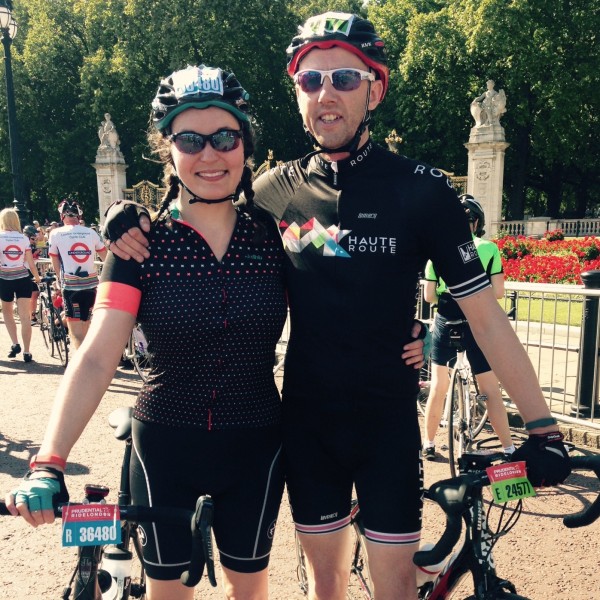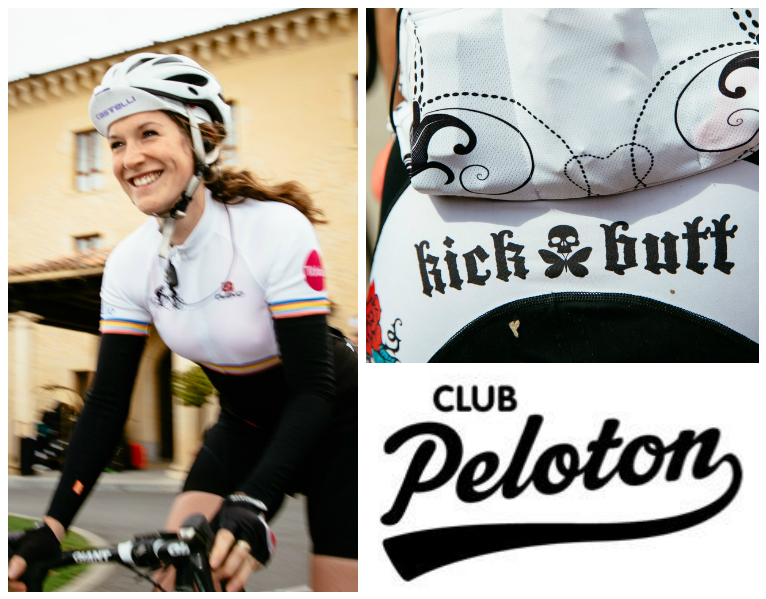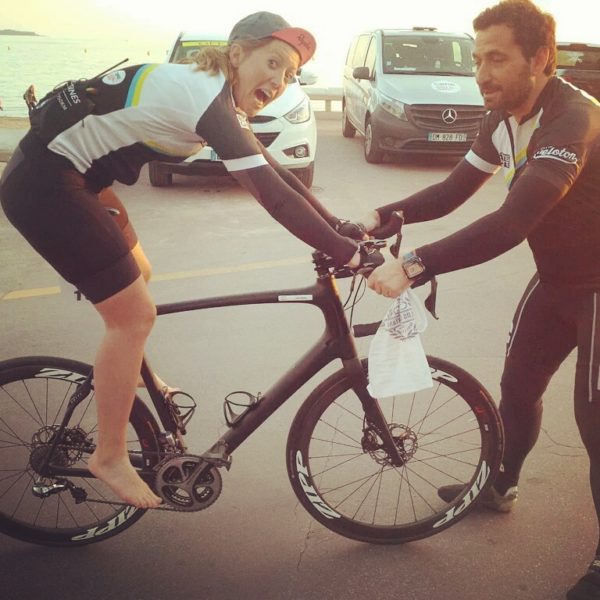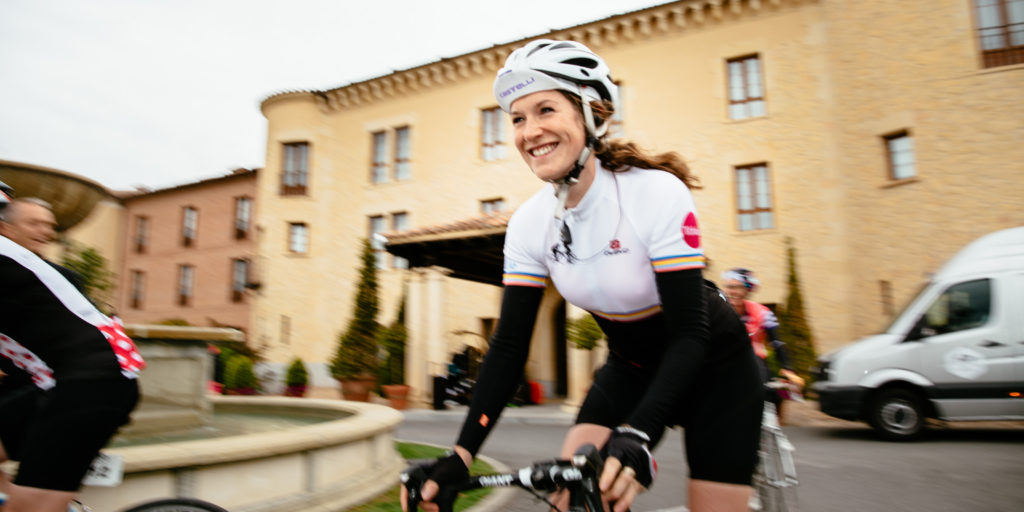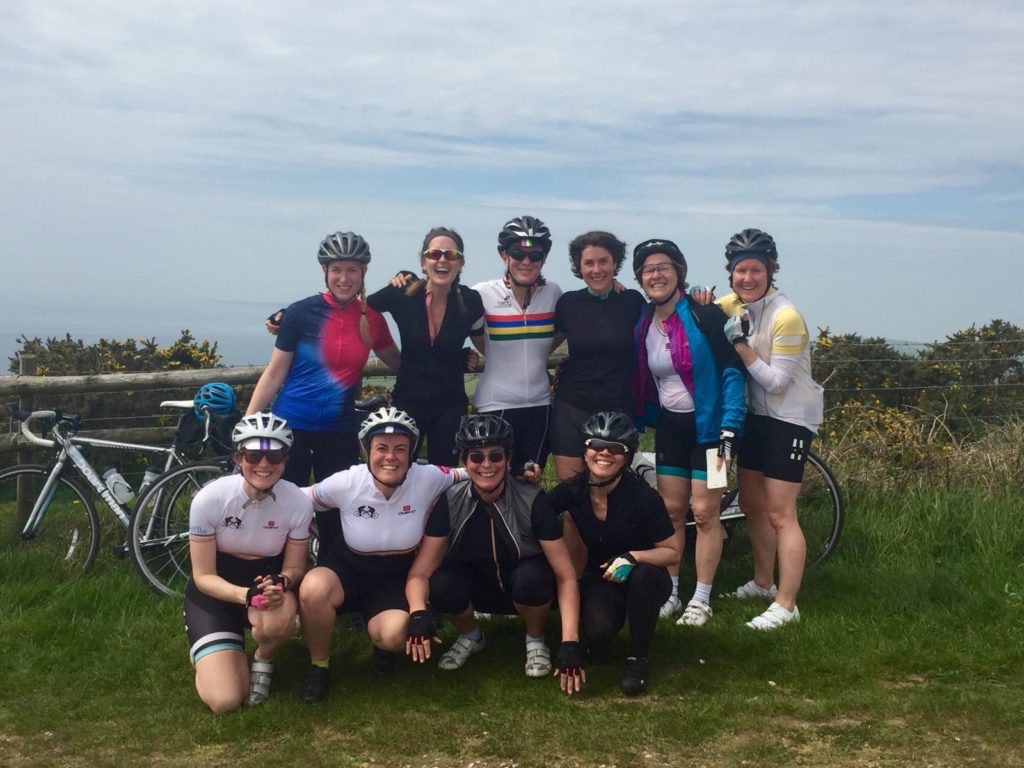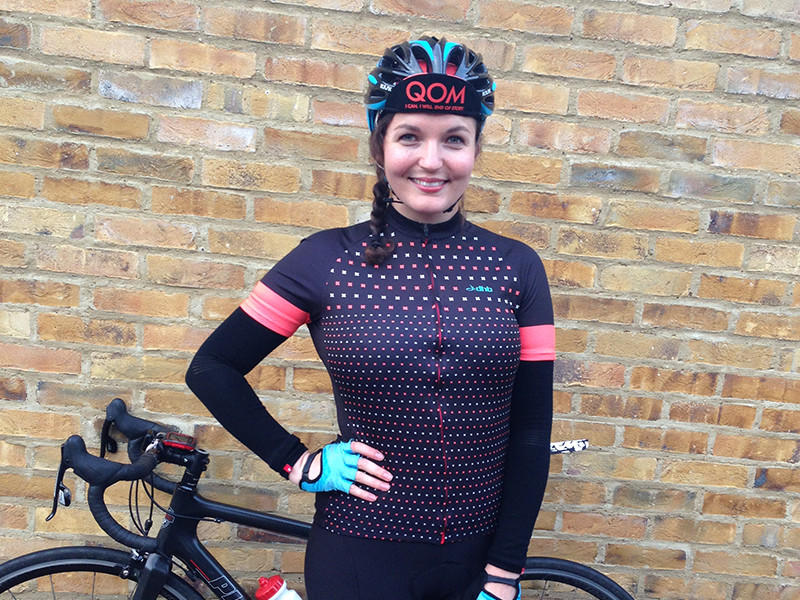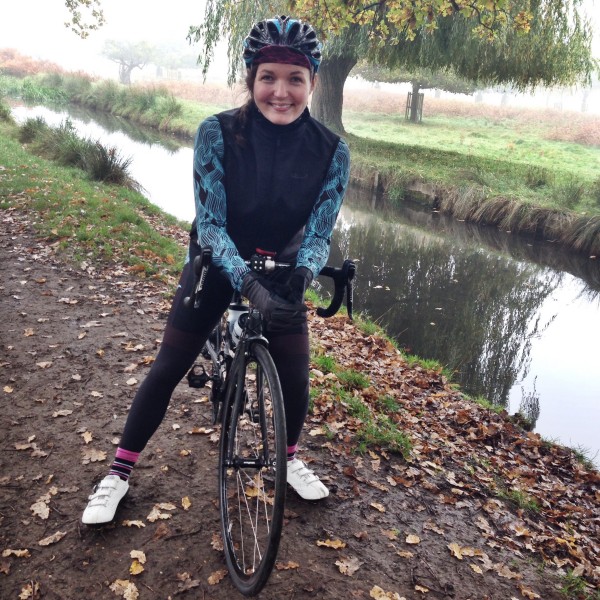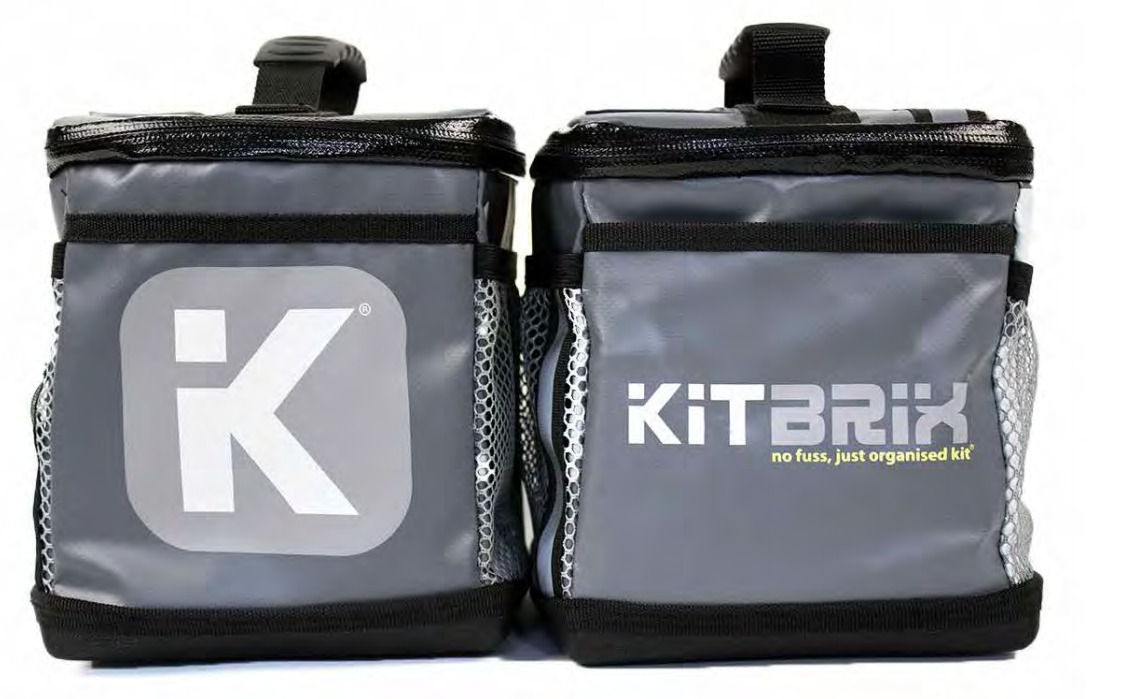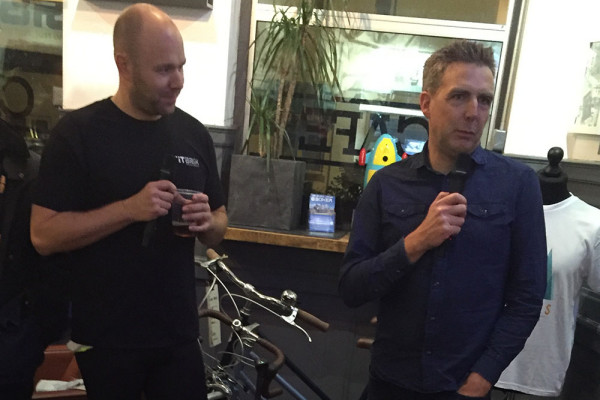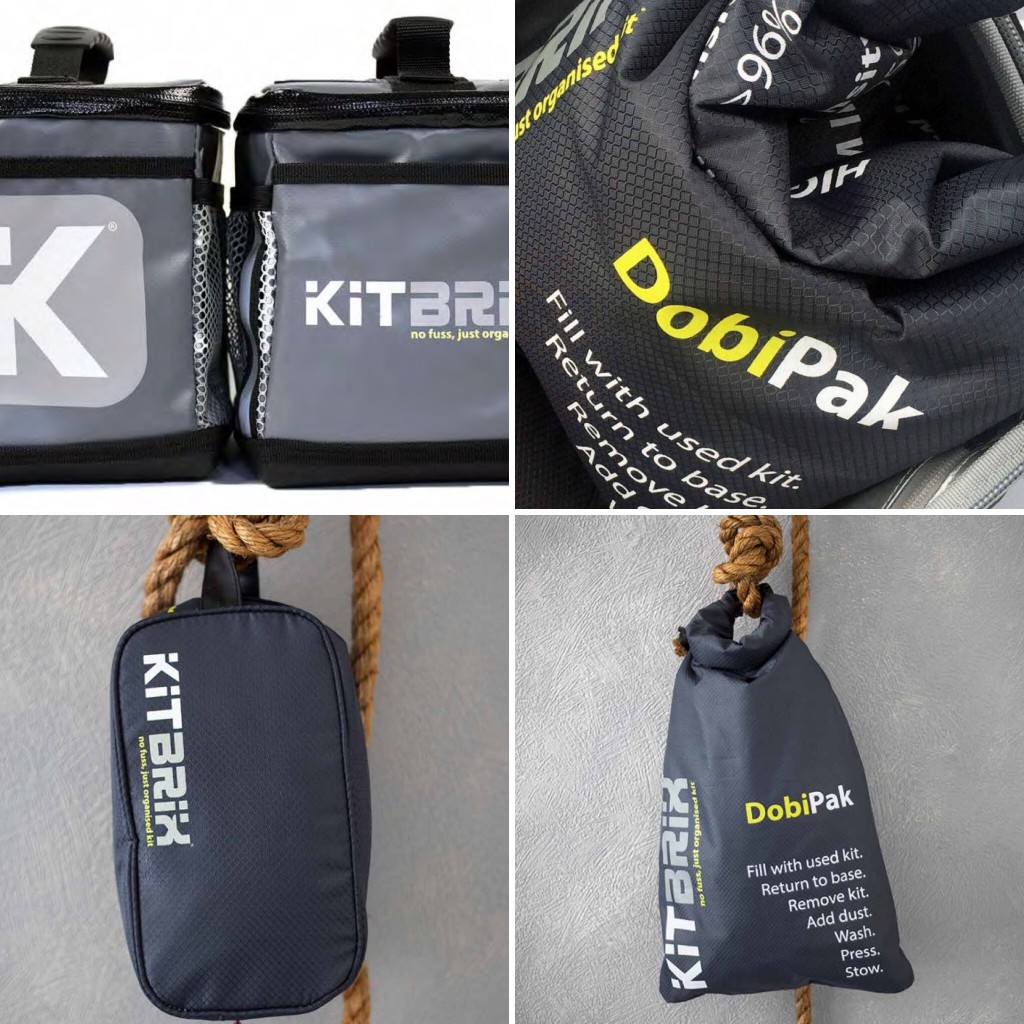The Prudential RideLondon event is almost upon us. If this will be your first time, you’re probably feeling a little bit apprehensive about a whole host of things. I’m going to share some of the worries I had before I took part for the first time, and hopefully provide some reassurance…
My RideLondon cycling buddy is starting in a different zone at a different time from me. What if we can’t find each other and I have to ride 100 miles alone?
What if I get a puncture and, even though I know how to deal with it, in reality the levers of my wheel skewers are stiff and I might not be able to fix it? Plus, I’ll just be really lonely, riding 100 miles without someone to talk to…
Don’t panic. Yes, if you’ve signed up with a friend or your partner, there is a very good chance that you will have been allocated different start times in different zones. But all is not lost: there are plenty of places to meet up only a short distance in to the ride. Our first year, we identified St Paul’s Church in Shadwell as being an easy landmark, and as Matt was the first to start, he pulled into the next side street to wait for me. No problem at all (unless the person you’re meeting is determined to get a good finishing time and doesn’t want to wait around. In which case… I don’t have any advice, I’m afraid. Except, tell them to chill out.)
Scope the area out on the Saturday if you can, and pick a spot where you think you’ll be able to find each other easily.
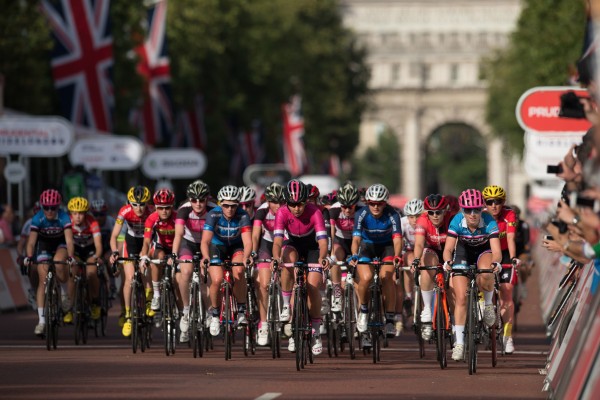
I’m really not sure how to fuel myself over that distance. What should I eat on the Prudential 100 to keep my energy levels up for that amount of exertion? What can I easily carry in my pockets?
I’m no sports nutritionist, but I’ve learned a few things about fuelling long rides. The first is this: do not go mad with the gels and powders.
Last year and the year before, the Prudential RideLondon event was hot. The first time we took part, we refilled our water bottles at every hub and, naively, merrily added the free powders at the drinks stations each time. We had a few gels over the course of the day, too. Terrible idea – we woke up the next morning with upset stomachs, which lasted for the next two days. Go easy on that stuff and ration it. Start the ride with orange squash in your water bottles and save the powders for the later in the day.
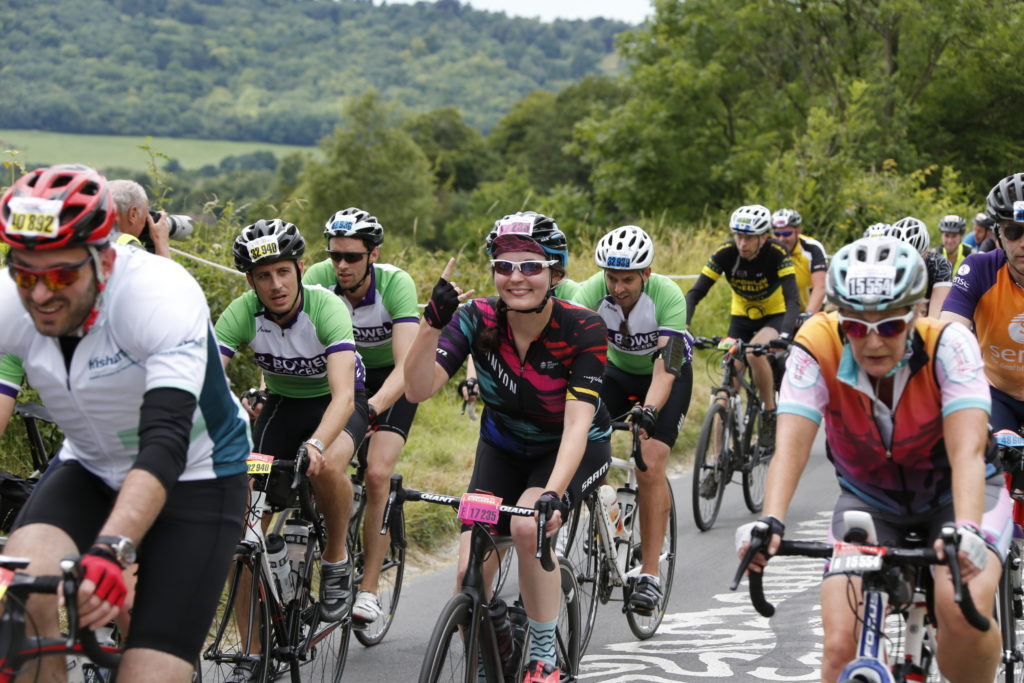
Secondly: energy bars and flapjacks are all very well, but we really envied the guy we saw at Hampton Court whose friend had met him with a box of pasta. If you can tuck a tasty wrap into your jersey pocket, it will make a welcome change from a Clif Bar.
Incidentally, we recently sampled natural energy bars from Veloforte and Lucho Dillitos which are both tasty alternatives to more synthetic sports nutrition bars.
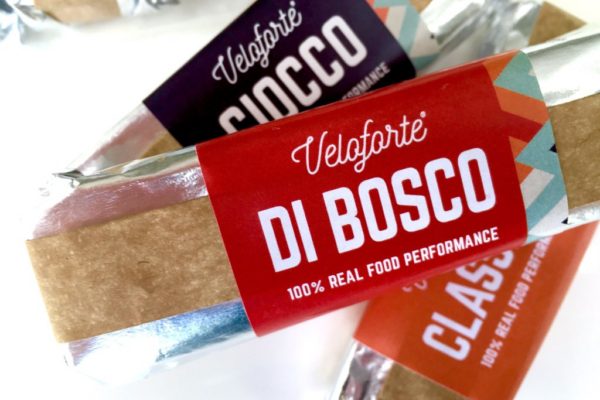
Veloforte bars are based on an old Italian recipe and contain fruits, almonds and spices to provide the carbohydrates, proteins and fibre you need to fuel your body on a ride. We’re rather keen on the Ciocco flavour. It’s gluten-free, dairy-free, egg-free, soy-free, GM-free and, above all, it’s easy to digest.
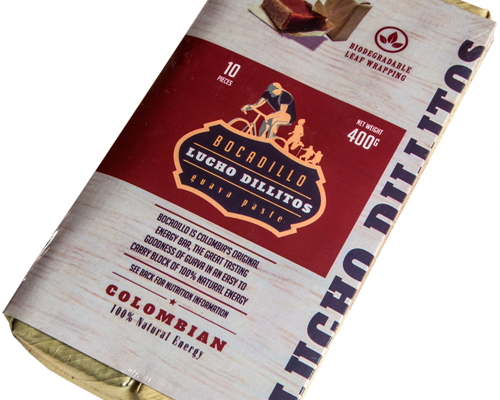
Lucho Dillitos bocadillo are another tasty natural alternative. From Colombia, bocadillos are something of a gel/energy bar hybrid. They are solid blocks of guava paste which looks really dry, but melt in your mouth (M&M style). They only involve two ingredients, and they’re wrapped in a natural, dried leaf.
Finally, if you’re wondering whether you’ll be able to face breakfast at 5am – how about a bowl of porridge or Bircher muesli before bed, and a smoothie when you wake up? (If you’re staying in a hotel, try a Moma porridge pot which just requires you to add boiling water.) You might find it easier than forcing down solids hours earlier than usual. But maybe take a banana to eat in your zone before you set off – you’ll be waiting around for a while.
I’m worried about climbing hills on the Prudential 100. I’m particularly worried about climbing hills in a group in case I’m slower than everyone else.
And that I might have to get off and push, and then I’ll be ashamed of myself…
There are a few climbs in RideLondon, sure. And hopefully you will have done at least a bit of hill training beforehand, otherwise, it’s going to be a shock to the system. But try not to worry.
Like a fool, I blithely trusted Matt when he told me that Box Hill was the worst thing I had to worry about on RideLondon. I’d ridden Box Hill several times – no problem at all, I thought! If that’s the biggest hill I have to deal with, I’ll be fine! He failed to mention that Newlands Corner and Leith Hill are both more challenging climbs.
Newlands Corner sort of comes out of nowhere, and it’s a steep pull. But there’s a hub at the top where you can regroup and catch your breath, followed by a marvellous downhill.
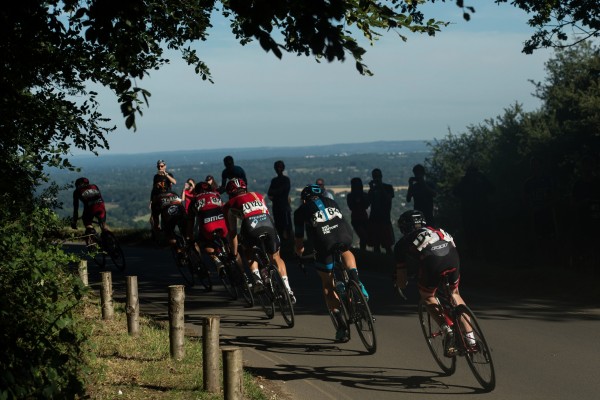
I can’t speak with any authority on Leith Hill – both years, right before we hit it the ride was diverted after someone very sadly suffered a heart attack and an air ambulance was summoned. However, from the amount of climbing I’ve done since, there are a few things I’ve learned.
![]() Firstly, don’t pay any attention to the riders who are going faster than you. It doesn’t matter what speed they’re doing, and if they have the energy to judge you on the climb, they’re clearly not trying hard enough. Keep your eyes down (don’t focus on what lies ahead) and pace yourself.
Firstly, don’t pay any attention to the riders who are going faster than you. It doesn’t matter what speed they’re doing, and if they have the energy to judge you on the climb, they’re clearly not trying hard enough. Keep your eyes down (don’t focus on what lies ahead) and pace yourself.
![]() Secondly, keep calm and steady. Don’t get flustered. What’s important is getting up there – you don’t have to get up there fast.
Secondly, keep calm and steady. Don’t get flustered. What’s important is getting up there – you don’t have to get up there fast.
![]() Don’t be shy about going into that granny gear if you need to. Don’t leave it too long to drop down a gear, either – if you’re feeling good on a climb you can always go up a couple, but if you’ve burned yourself out too early on, it’s much harder to recover.
Don’t be shy about going into that granny gear if you need to. Don’t leave it too long to drop down a gear, either – if you’re feeling good on a climb you can always go up a couple, but if you’ve burned yourself out too early on, it’s much harder to recover.
![]() Finally, if you really are struggling, keep to the left so that other riders can easily pass you. On one of the climbs last year there were hoards of slower cyclists strewn across the road, which made it really difficult for anyone else to get past. And if you veer across the road, you might cause an accident.
Finally, if you really are struggling, keep to the left so that other riders can easily pass you. On one of the climbs last year there were hoards of slower cyclists strewn across the road, which made it really difficult for anyone else to get past. And if you veer across the road, you might cause an accident.
And a note for the final few miles: Wimbledon Hill isn’t particularly large, but 90 miles in to a ride and when you’re homeward bound, it can take you by surprise. Keep something in reserve so you have the energy to tackle it!
I’m not very experienced when it comes to riding in groups…
For the most part, you actually won’t be riding in very close proximity to other riders on RideLondon. There are certain pinch points, though, where you do need to take care and bear a few things in mind.
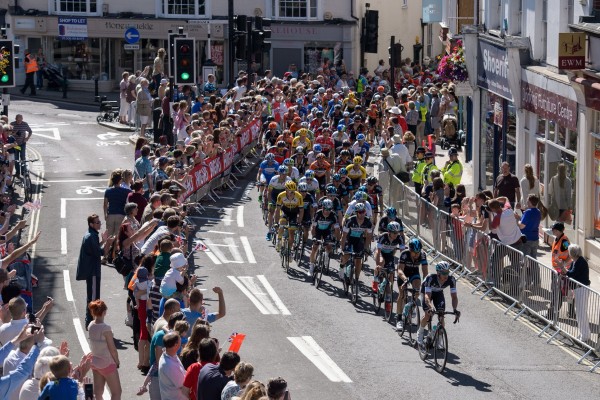
You’ll be bunched up when you set off from the starting pen, so take care at the starting line. Don’t ride like an idiot. Be consistent, and don’t slam your brakes on without warning. Keep a steady course and don’t veer across the path of other riders. This is really important on the hills, too.
On the ride, be sure to signal your intent and remember that a helpful call of “On your right” when overtaking other riders lets them know that you’re there and not to pull out on you. You will hear it a lot, and if your ride is going well, you might find yourself using it a lot!
It’s worth learning a couple of basic hand signals, particularly to warn riders that the group is slowing: make a patting gesture with your right hand, as if you are patting a dog’s head. (You can find more helpful guidelines for riding in a group at British Cycling if you are still worried.)
How much am I going to hurt after RideLondon? I don’t think my saddle is going to be very comfortable…
If you’re in this boat, you have my sympathies.
This time last year I had been desperately trying to find a saddle which would be comfortable, and failing miserably. I’d been crippled by the Selle Italia Diva Gel Flow – some people rave about it, but for me, it was a torture device that left me with serious saddle pain and small lesions in my soft tissue. Not really knowing what else to try, I’d gone for a Fabric Scoop in the hope that a completely different shape would help. No. It did not. That, too, left me incredibly sore.
It was only after the Prudential 100 that I went to Cycle Fit for a saddle mapping session and learned about my sit bones and what makes them tick. I’d imagine you’re too late to get a saddle mapping session at this late stage, but going to a good bike shop where they can measure your sit bones and get you on the correct width of saddle is still an option.
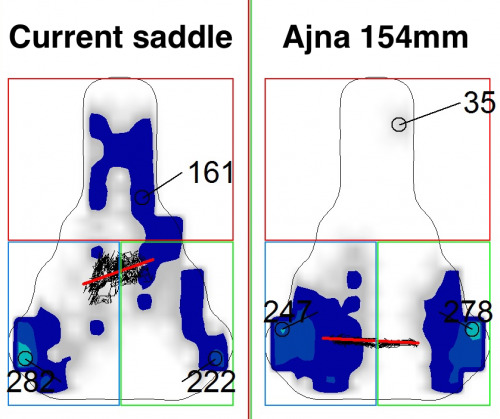
After almost a year on the Bontrager Ajna, I’ve just switched to the Specialized Power Expert which was comfortable on my longest training ride of 80 miles.
You’re never going to be without any pain after cycling 100 miles. I honestly don’t think it’s possible to spend that much time sitting on any saddle without experiencing a little discomfort. But you shouldn’t be crippled by saddle pain 50 miles in. If you think you will be, you still have time to do something about it.
I read a lot about chamois cream. This time last year I would have told you it’s not tremendously helpful, but over the past year I’ve been converted by Rapha and Assos, both of which make excellent chamois creams that really help ease your day in the saddle.
Finally, make sure you’re wearing a good pair of shorts. Matt and I are big fans of Rivelo bib shorts which have an excellent chamois pad. We’re also very impressed by the RedWhite Bib Shorts, which are available from Always Riding. They’re listed under men’s, but don’t let that deter you – they’re very good. Morvelo make good chamois pads, too.
Are you worried about anything else? By all means, Tweet us with the hashtag #RideLondonWorries and we’ll try to calm your nerves. But do try not to worry – it’s a fantastic event with loads of support, and your nerves will settle in no time. Just relax and soak up the atmosphere – it will be a day to remember!
